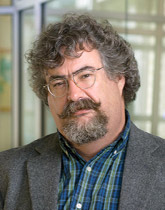In 1993, I was a graduate student in History at Carnegie Mellon. That spring, I was approached by Steven Schlossman, a policy professor, for help with researching and writing a report being prepared by the RAND Corporation that would investigate the feasibility of allowing gay men and lesbians to serve in the armed forces openly. The ensuing report, “Sexual Orientation and US Military Personnel Policy,” became part of the debate that resulted in “Don’t Ask, Don’t Tell,” a compromise that lasted 17 years.

That year also saw another less-heralded but equally significant development in the Gay Rights movement: the Supreme Court of Hawaii ruled that it was discriminatory to reject marriage-license applications from same-sex couples, thus beginning the long list of decisions that have resulted in at least a dozen states allowing same-sex couples to wed or form civil unions, as of this writing.
The repeal of Proposition 8 in California in February marked yet another milestone in the fight for civil rights. The likelihood of that case being argued before the Supreme Court, bringing gay marriage into national debate, may make marriage equality part of federal law. Along with the 2003 decision in Lawrence v. Texas that invalidated sodomy laws and the executive order repealing ‘Don’t Ask, Don’t Tell,’ the imperative of same-sex equality may have reached a tipping point, making a once-reviled minority part of the American community in less than a generation.
I know, because it happened during my lifetime. As a historian, I was trained to look for incremental alterations that affect societies over time. Candidly, I am flabbergasted by the speed of change: 40 years ago, openly gay men and lesbians couldn’t work for the federal government, let alone serve in the armed forces. The great levers of postwar mobility, including the GI Bill and corporate employment, were generally off limits to those admitting their affectionate preferences. Civil liberties—such as the right to assemble peaceably—were ignored. Consensual homosexual activity remained illegal and gay marriage or adoption unthinkable.
But a lot more gay people were alive back then. The decimation of the gay community in the 1980s and 1990s was a tragedy, but AIDS paradoxically forced many Americans to re-examine their own prejudices about same-sex behaviors and get on with the work of providing support services and medical care, affirming a basic decency in American society. Rather than disappearing, the gay community became politically active and voraciously argued for the full rights and responsibilities of citizenship. Although we will never really know if AIDS spurred the pursuit of equality or deferred it, the crisis became a crucible of GLBT—Gay, Lesbian, Bisexual, and Transgendered—history in America.
Greyer and older and now on the faculty, I am occasionally reminded that my first-year students were born at the same time I began researching sexual orientation and military service. According to recent polling data, approximately three-quarters of college students support gay marriage and an even higher proportion support gay and lesbian rights more generally. The final indicator of transformation might very well be irrelevance: my students readily discount assumptions regarding sexual orientation and judge their classmates by their characters. For me, it’s satisfying enough to think that these issues may soon become history.
—Timothy Haggerty
Haggerty is the Director of the Humanities Scholars Program, an interdisciplinary honors program in the Dietrich College, as well as an adjunct professor in History. His research interests include the changing roles of masculinity and the role of the state in formulating identities in the 19th and 20th centuries.



